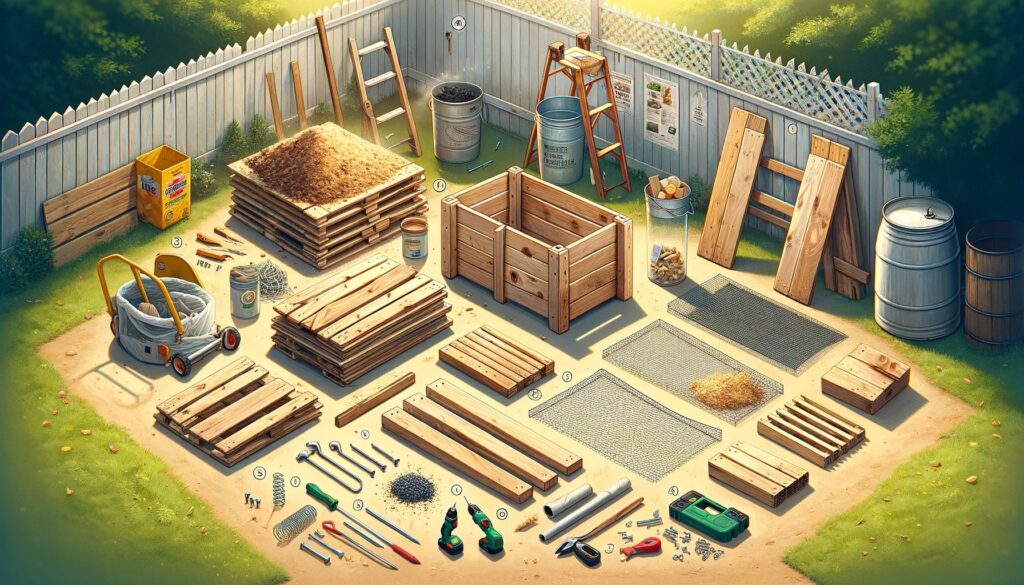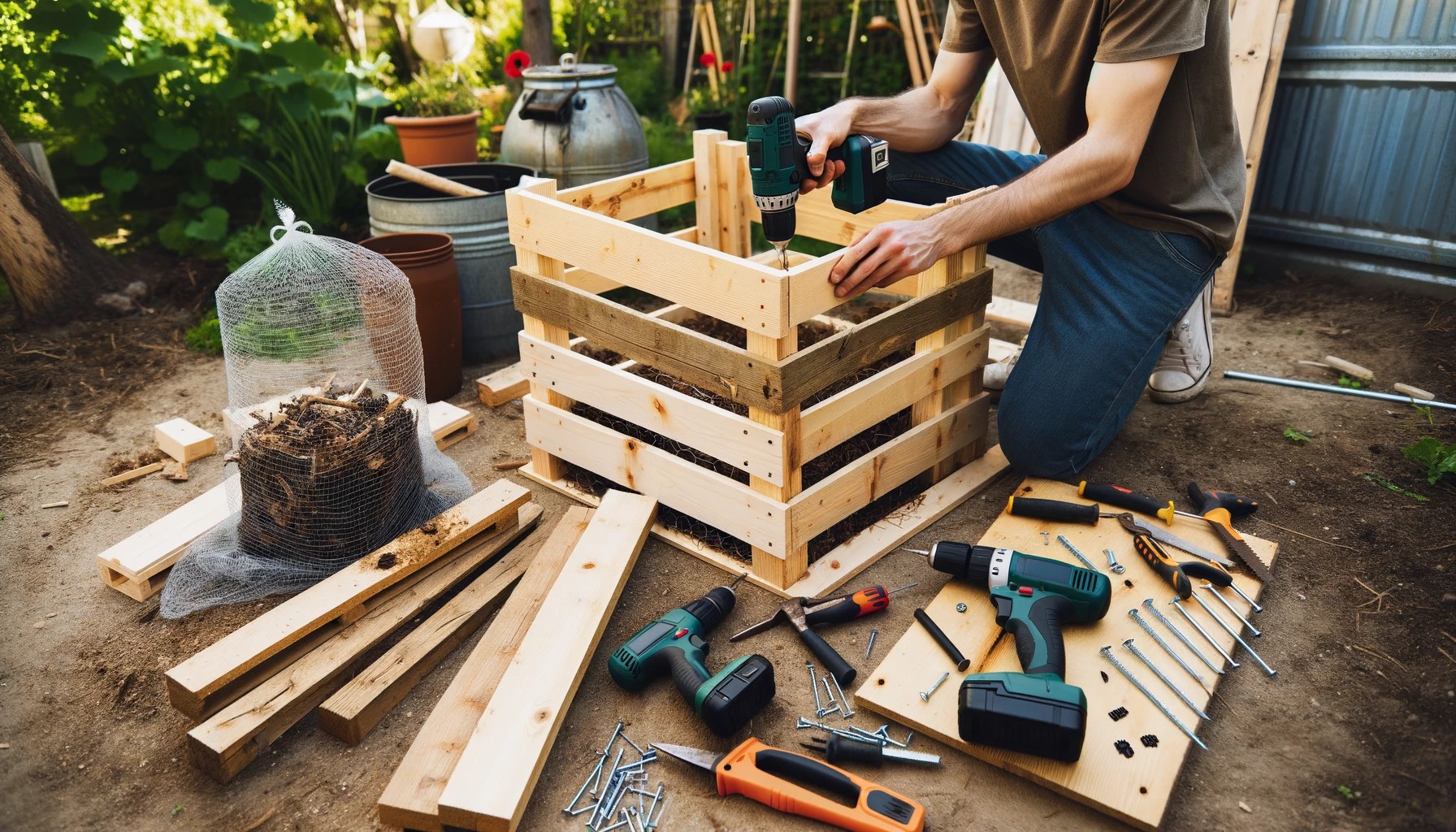Creating a compost bin is a rewarding DIY project for garden enthusiasts and environmental advocates alike. Composting offers a sustainable method to recycle kitchen and garden waste, transforming it into nutrient-rich soil that can significantly benefit your garden. This guide will walk you through constructing a simple yet effective compost bin using easily accessible materials.
Materials and Tools Needed
Before starting, make sure you have all the necessary materials and tools:
- Untreated wooden planks or pallets
- Chicken wire or hardware cloth
- Hinges and latch (for a lid, if desired)
- Screws and nails
- Drill and saw
- Wire cutters
- Staple gun
- Gloves and safety goggles for protection

Choosing the Location
Find a suitable spot in your yard that is convenient but shielded from direct sunlight and excessive rain. Ensure the location has proper drainage to prevent waterlogging.
Designing Your Compost Bin
Decide on the design of your compost bin. It can range from a basic box structure to a more elaborate multi-bin system that accommodates different stages of compost. Key features include adequate air circulation and ease of access for turning the compost.
Building the Frame
Use the wooden planks or pallets to construct a frame. A standard size for a single bin is approximately 3×3 feet, but you can adjust this based on your needs and available space.
- Secure the frame’s corners with screws or nails to ensure stability.
Adding Sides
- To allow for air circulation, attach chicken wire or hardware cloth to the frame’s sides using a staple gun. This setup ensures your compost receives the necessary airflow.
- If you opt for pallets, they can naturally serve as the sides of your bin, offering both structure and ventilation.
Creating a Lid
- Though optional, a lid can prevent unwanted pests and excessive rainfall from entering your compost bin.
- Construct a lid using additional wood or leftover pallets and attach it with hinges for easy access.
Setting Up Your Compost Bin
- Position your newly built compost bin in the selected area.
- Begin composting by alternating layers of green materials (such as kitchen scraps) with brown materials (like dry leaves or wood chips).
Maintaining Your Compost Bin
- Stir the compost regularly with a shovel or pitchfork to ensure proper aeration.
- Maintain the moisture level of the compost, keeping it damp but not overly wet to support decomposition.
Building a compost bin is not only a practical project but also an act of environmental stewardship. It allows you to contribute to waste reduction while enriching your soil, promoting healthier plant growth. Whether you’re an avid gardener or looking to adopt more eco-friendly practices, a homemade compost bin is a great addition to any backyard.



